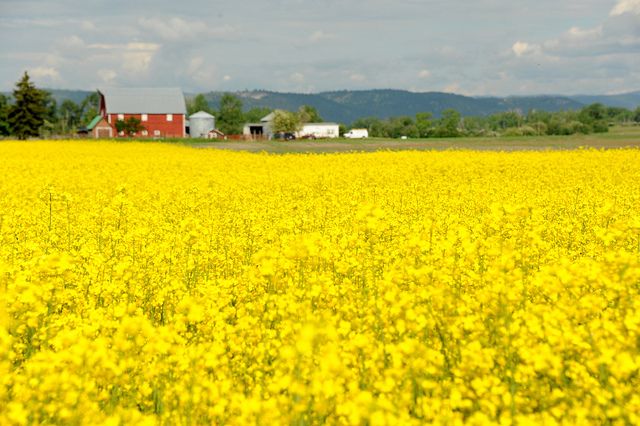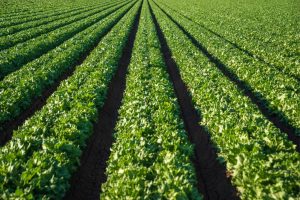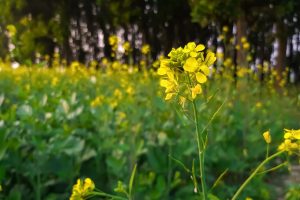

In view of the increasing demand and price of oil, there is immense potential in Mustard Cultivation Farming. Nutrients are very much needed for its plant to grow fully and give a good yield and if there is a lack of even one nutrient, then the yield potential of the plant decreases. As a result, the lack of nutrients in the mustard crop has a direct effect on its yield. Apart from this, many times farmers have to face losses due to a lack of proper knowledge of its deficiency symptoms, so in agriculture, apart from nutrient management, they gave complete information about mustard cultivation which is as follows.
Table of Contents


The use of fertilizer “Gropius” containing sulfur is more beneficial.
Sulfur deficiency has been observed in the soils of many areas of Madhya Pradesh, due to which the crop production is decreasing day by day and the percentage of oil is also decreasing.
For this, it is necessary to give 12-16 kg of sulfur element per acre. Which can be fulfilled by the use of fertilizers like Gropius, Gromor (Double Horse Super) Super Phosphate, Gromor 20:20:0:13 (Ammonium Phosphate Sulphate), Ammonium Sulphate, etc.
Another product of Coromandel Private Limited is ‘NRICH’, which increases the yield potential in mustard cultivation.
Topping of Mustard: When mustard is about 30-35 days old and at the initial stage of flowering, the mustard cultivation plants should be plucked from the top of the main stem with thin wood. By doing this process, the growth of the main stem stops, and the number of branches increases, due to which the yield increases by about 10 to 15 percent.
Irrigation: Irrigation has been found to increase production by 25-50 percent at the right time. In this crop, 1-2 irrigations are beneficial. If mustard has been sown without sown, then first irrigation should be done 30-35 days after sowing. After this, if the weather remains dry i.e. no rain, then after flowering at the stage of 60-70 days of sowing, take a spray of Fantec plus 100 ml mixed with water per acre.
Aphids: Both young and adults suck the cell sap from different parts of the plant i.e. inflorescence, leaf, stem, twig, and pod. In heavy infestations the plants become stunted, and dry, resulting in no pod and seed formation. Aphids secrete honeydew, resulting in “Sooty Moulds”.
Management: To control it, take a spray of Fendal 350 – 400 ml per acre or Ostra 50 gm per acre.
Painted Bug: Both infant and adult suck the cell sap from leaves and twigs. This causes the leaves to turn white concurrently to complete the drying of the plant.
Management: To prevent this, crop protection can be done by treating Ostra FS 8 ml per kg seed.
Bihar Hairy Caterpillar: The larva is reddish-yellow and its body is covered with hairs. The larva disintegrates from the margins of the leaves and in severe infestations the entire plant. Leaves become devoid of chlorophyll and almost transparent. It has a habit of migrating from one area to another.
Management: For its protection, spray Benzer with a solution of 100 grams per acre.
Leaf Minor: This insect is active from December to May and spends the rest of the period in the soil in the pupa stage. In case of severe infestation, the infected leaves become wilted by the attack, and the plant’s growing capacity is reduced. Its damage is often more prominent on older leaves.
Management: To control it, take a spray of Nimajal @ 100 – 150 ml per acre.
Mustard Saw Fly: It creates uneven holes in the leaves. It attacks the crop in the transplanting stage and infects the crop and it is most liked by three to four weeks old crops.
Management: To control it, take a spray of Fendal at the rate of 350-400 ml per acre.
Leaf Webber: New larvae feed on the chlorophyll of tender leaves. Later it feeds on leaves, flower buds, and the upper canopy of inflorescences, resulting in severe stunting of plant growth.
Management: For its protection, you have to spray Fendal at the rate of 350 – 400 ml per acre.
Alternaria Blight Disease: Small circular brown necrotic spots on lower leaves that gradually increase in size. Unites to cover large patches showing bleaching and defoliation in severe cases. This causes circular, dark brown lesions to develop on the pod. Also infected beans produce small, deformed, and withered seeds.
Management: To control, take spray of Magnit at the rate of 200 ml per acre.
White Rust: In case of local infestation, white creamy yellow raised pustules appear on the leaves which later coalesce to form patches. During humid climates, a mixed infestation of white rust and downy mildew causes swelling and deformation of the stem and flower parts due to overgrowth and hyperplasia, and the development of a “stag head” structure.
Management: To control, take spray of Magnit at the rate of 200 ml per acre.
Downy Mildew: Brownish-white irregular necrotic patches develop on the lower surface of the leaves. Later, under favorable conditions, brownish-white fungal growth may also be observed on the spots. The most characteristic and obvious symptom is an infection of the inflorescence which causes overgrowth of the inflorescence and develops the stag head structure.
Management: To prevent this, take a spray of Marlet@500g/acre or Jatayu@300-400g/acre in the early stage and spray Magnitite@200ml/acre in the early stage of the disease.
Powdery Mildew: Symptoms appear as dirty white, circular, floury patches on both sides of leaves. Under favorable environmental conditions the entire leaves, stem, flower parts, and pods are affected. The whole leaf can be covered with powdery mass.
Management: To control it, take a spray of Magnitite@200ml/acre.
Bacterial Blight/Black Rot: Leaf tissue turns yellow and chlorosis reaches the center of the leaf and forms a V-shaped area with a V base. Veins show brown to black discoloration. Dark streaks form on the stem from ground level and the stem becomes hollow due to gradual rot. Midrib cracking of lower leaves, browning of veins, and wilting are observed.
Management: To control it, take a spray of Magnitite@200ml/acre.
Club Rot: Plants affected by this remain stunted and develop small nodules in the root system leading to large club-shaped outgrowths. Leaves turn pale green or yellow and then wither and in severe conditions, the plant may die.
Management: To prevent this, take spray of Marlet@500g/acre or Jatayu@300-400g/acre in the early stage and Magnite@200ml/acre at the onset of disease.
Sign up to receive our email, delivering the latest stories straight to your inbox.
